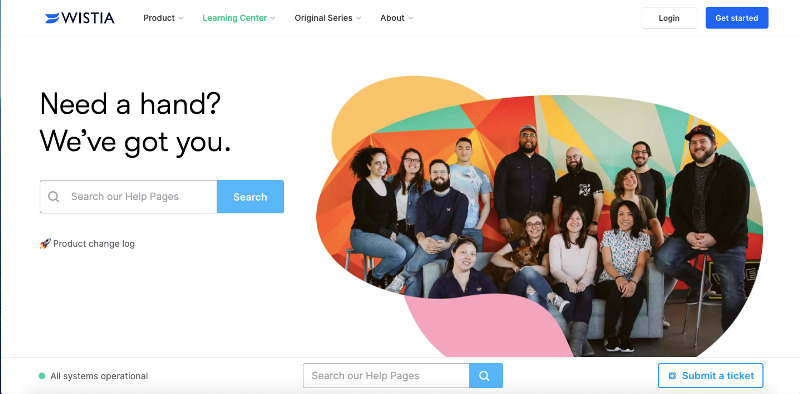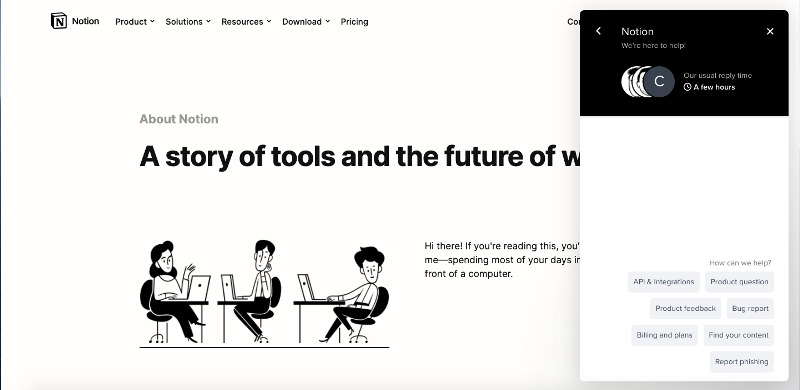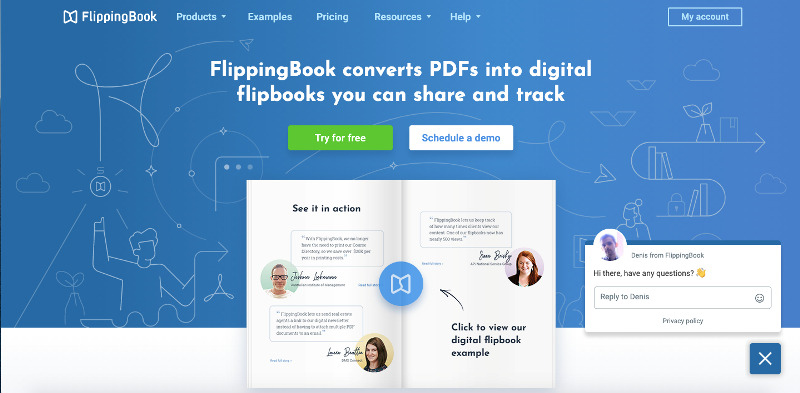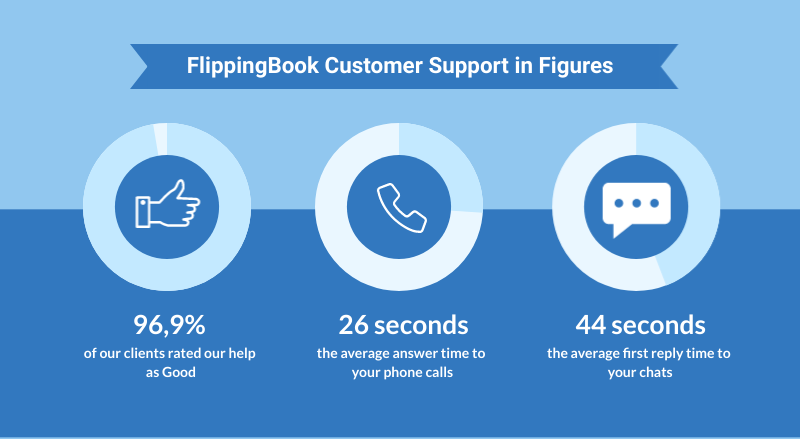There is hope for a SaaS business with a less-than-perfect product and outstanding customer support. There is none for a company with a flawless product and garbage customer service.
Why? Because customer support is important for any business, but for SaaS it’s crucial. SaaS companies offering subscription-based services thrive on customer retention. And retention depends heavily on customer experience—78% of customers say they would bail out because of the ineffective customer service. Moreover, in the world with an oversupply of products and services, great customer support has become a unique selling point. And frankly, it may be the only thing that keeps your customers from turning to your Archnemesis (er, meaning, competitor).
Jokes aside, the importance of great customer support cannot be overstated. Not only does it help your business to reduce churn and increase customer retention, but it also gives you cross-selling and upselling opportunities, and paves the way for strong customer relationships.
In this article, we’ll discuss the essentials and best practices of SaaS customer support, look at a few great examples, and share a bit about how we go about it at FlippingBook.
3 Key Elements of Good Customer Support
The three pillars of good customer support are availability, speed, and effectiveness.
Availability means that people can reach you wherever, whenever.
Few things in the world are more frustrating than having to look for a contact form in a website footer when a tech issue brings your work to a halt (and you have a deadline to meet.) And then, after sending the support request, realizing you’ll be contacted the next morning. Or Monday. Ouch.
To spare your customers this ordeal, you can do a few things.
- Extend your support hours as much as possible to cover all time zones. 24/7 is perfect, but a 20/5 with limited availability on weekends is still better than sticking to business hours local time.
- Adopt an omnichannel approach. Your customers should be able to reach you via any means they prefer: email, phone, VoIP call center, chat, or social media. Providing swift response through all of these channels, including business phone services and contact center solutions, is the key to high customer satisfaction.
- Use a website widget. Even if you only provide email support, don’t make your customers look for that form. The widget will let people reach you the moment they come to your website—this will instantly show them you care.
Speed. 10 years ago a customer could tolerate a “Thank you for your request! We’ll get back to you in 24 hours”. But in 2021 ⅔ of customers expect a response within 10 minutes or less. And for live chat support, the average response time expectation is 48 seconds!
Effectiveness. However swift your responses are, they won’t help you get into a customer’s good books if the problem at hand isn’t solved.
The ability to resolve issues quickly and efficiently depends on many things, including knowledgeability of your agents, the complexity of the product, and the communication processes between the support and the product teams. But even if you cannot affect the time it takes your developers to fix an issue, there are things you can do to raise customer satisfaction.
6 Best Practices for Outstanding Customer Support
#1 Build a strong knowledge base
Writing and maintaining an extensive Help Center is no small feat, but it’s a necessary one. Studies show that 73% of customers would prefer self-service as a go-to solution when facing an issue or looking for product info. So at a minimum, an FAQ page is a must, and a well-structured, in-depth knowledge base is a huge perk to the overall customer experience.
Apart from catering to users who prefer to resolve issues on their own, having a strong knowledge base will reduce the ticket load, simplify the work process, and save your team from overworking nightmares. This will let your agents focus on more complex requests and provide better support in general.
#2 Provide in-app support
We’ve already talked about a website widget, but it’s even more important to provide support in the app. That’s where your users are when a question or an issue arises—so if you’re able to help on the spot, your thoughtfulness will be appreciated ten-fold.
#3 Ask for customer feedback and act on it
Not only do people prefer the brands that listen to them, they expect the companies to.
But client expectations aside, collecting customer feedback is an important part of quality support. It helps you identify common problems and resolve them before they turn into a disaster. It can also show you opportunities for business and product growth, backed up by real data about your customers’ pain points.
On a smaller scale, regular checkups let you find dissatisfied customers and help them proactively. This may or may not win people over, but they will probably appreciate the effort and this will save you a couple of bad reviews online.
#4 Keep all the customer data in one place
Providing customers with multiple channels to reach out helps with availability but at the same time, it paves way for another possible issue: breaks in communication flow. Without a single touchpoint, data gets lost between messages, agents, and teams, forcing the customer to explain his issues over and over again to different people. This may lead to all sorts of misunderstandings and confusions, leaving the customer more frustrated than when they first contacted you.
To avoid such situations, make sure that all the key customer data goes to a single place like a CRM, and that it is available to all the customer-centered teams: support, sales, and marketing. This will help to keep everyone in the loop, and provide customers with consistent and frictionless communication. Moreover, unorganized customer data can also lead to digital fraud or identity theft, which can significantly hurt your business.
#5 Embrace live chat
A live chat may feel like a hassle if you’re used to relying on email and phone. But today, live chat is a go-to option for 41% of customers, topping even phone support (which is still preferred by 32%).
It’s mostly about speed. When people have a question, they want an answer right here, right now. And who’s to blame them? With the live chat software so common, opting for email or even spending 10 minutes on the phone line seems like a waste of time.
Live chat gives the customer the opportunity to get an answer or solve a problem without breaking away from their routine, so it’s no wonder this option is so popular.
And with sales inquiries, this game of time is even more important, having the power to make or break a potential buyer’s decision to go with your product. So don’t reserve the live chat option only for support or sales requests—it is vital for both.
#6 Keep communications personal and transparent
We’ve already talked about how customers expect consistency and feedback from companies. People are tired of faceless corporate machines—they want to see humans behind the brands and to have real conversations with them.
Luckily, you don’t have to go out of your way to show people you care. It’s small details that matter.
Note the communication channel your customer prefers: is it Twitter or email? Make a point of talking to them there. Address them by the name or title they provide. Talk as humans do, not as bots.
Another important point is to be transparent about the technical issues and maintenance times. Make sure you give people heads-up before any scheduled maintenance—even when you only need several minutes. If your service is unavailable and it disrupts someone’s work, it’ll leave a bad impression. Consider running a status page (here’s how we do it). It will give people a sense of stability and security.
And if something unexpected happens (and it will sooner or later), don’t panic! Keep calm, apologize, and provide updates. It is very likely that people will remember not the issue itself, but how professionally you handled it.
Best Examples of Amazing SaaS Customer Support
#1 Wistia: a perfect knowledge base

Wistia is a video hosting platform for businesses. And while their product is less complicated than many, it still requires a learning curve to figure out how to use it to its full potential.
Wistia does an amazing job of providing customers with in-depth and well-structured articles that contain info on everything from setting up to billing questions to integrations. For those who prefer video content to texts, there are short and helpful video tutorials. And thanks to the smart search and a visible “Submit a ticket” button customers can quickly get the help they are looking for.
#2 Notion: quick and personal chat convos

The chat option doesn’t pop up at you when you go to the website, but once you click on the ‘Contact Support’ option in the footer, it’s there.
Notion plays it safe stating that the typical response time is a few hours, but you can usually talk with a real agent in 10-20 minutes or switch to email if you need to step away from the desk.
The agents are very helpful and give what feels like non-scripted responses and explanations. This approach works wonders even when you discuss such things as feature requests and issues that cannot be resolved immediately.
#3 FlippingBook: omnichannel and swift

At FlippingBook, we want our customers to feel welcome the moment they open our website. That’s why there’s a live chat widget available on any page, and you can talk to a real person there within minutes (we don’t use chatbots or voice response systems).
Plus, we have dedicated agents for social media, phone, and email, of course. So you can use any channel you like to ask us questions and report issues. We also provide in-app support for swift guidance and fixes—because we know how important it is for our customers to feel that we are there to lend a hand.
And here are some stats:

- We’re here to help you 24 hours a day (weekdays UTC)
- 96,9% of our clients rated our help as Good (988 rated tickets)
- The average answer time when you call is 26 sec (480 calls)
- The average first reply time to your chats: 44 seconds (7705 chats)
If a simple call, chat, or email isn’t enough: Our Customer Success Managers help new users onboard and help experienced users how to get the most from your product in free personal Zoom sessions.
Conclusion
While companies keep talking about reduced churn and cross-sell opportunities when discussing customer support, it is important to remember that good support is first and foremost about helping people.
If you are helpful, sincere, and not afraid to take responsibility for your mistakes (which are inevitable—and it’s okay), you already provide great customer support. And we hope that with a few actionable tips we’ve shared with you, you’ll make it even better.





